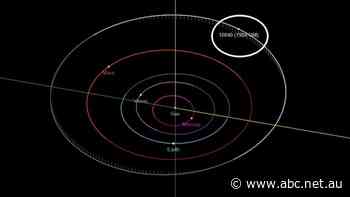
This image shows the locations of 115 potential free-floating planets recently discovered by a team of astronomers in the direction of the Upper Scorpius and Ophiuchus constellations, highlighted with red circles. The analysis of data from the Dark Energy Survey is supported by the DOE and the NSF. At present the Dark Energy Camera is used for programs covering a huge range of science. It was built and tested at DOE's Fermilab, and was operated by the DOE and National Science Foundation (NSF) between 20. One of the highest-performance, wide-field CCD imagers in the world, the Dark Energy Camera was designed for the Dark Energy Survey funded by the Department of Energy (DOE). So the Dark Energy Camera and NEWFIRM were very appealing for our project because they are among the most sensitive wide-field cameras in the world." "We needed very deep and wide-field images in both the optical and near-infrared, spanning a long time baseline.
Telescope glimpses population freefloating planets archive#
"The treasure trove available in the NOIRLab Astro Data Archive has been fundamental to this study," Bouy says.

Blanco 4-meter Telescope at CTIO, and 3744 images from the Dark Energy Camera. The data include 247 images from the NEWFIRM extremely wide-field infrared imager at Kitt Peak National Observatory (KPNO) in Arizona, 1348 images from the same NEWFIRM instrument after it was relocated to the Cerro Tololo Inter-American Observatory (CTIO) in Chile, 2214 images from the Infrared Side Port Imager that was previously operating on the Víctor M. Hervé Bouy, an astronomer at the Laboratoire d'Astrophysique de Bordeaux, and project leader of the research, says that the discovery of so many free-floating planets would not have been feasible without access to NOIRLab's Astro Data Archive and Astro Data Lab Science Platform operated at the Community Science and Data Center (CSDC). This is the largest sample of such planets found in a single group and it nearly doubles the number known over the entire sky.

Using observations and archival data from several of NSF's NOIRLab's observatories, together with observations from telescopes around the world and in orbit, astronomers have discovered at least 70 new free-floating planets - planets that wander through space without a parent star - in a nearby region of the Milky Way. To find these planets, the study's first author, Núria Miret-Roig of the Laboratoire d'Astrophysique de Bordeaux, at the University of Bordeaux in France, with a team of astronomers, used observations and archival data from a number of large observatories, including facilities from NSF's NOIRLab, telescopes of the European Southern Observatory, the Canada-France-Hawaii Telescope, and the Subaru Telescope, amounting to 80,000 wide-field images over 20 years of observations.


The first free-floating planets were discovered in the 1990s, but the latest findings have almost doubled the total number known. At least 70, and as many as 170 of these Jupiter-sized planets have been found by examining data from over 20 years of observations. Researchers have discovered a group of free-floating planets-planets not orbiting a star-in a nearby region of the Milky Way known as the Upper Scorpius OB stellar association.


 0 kommentar(er)
0 kommentar(er)
